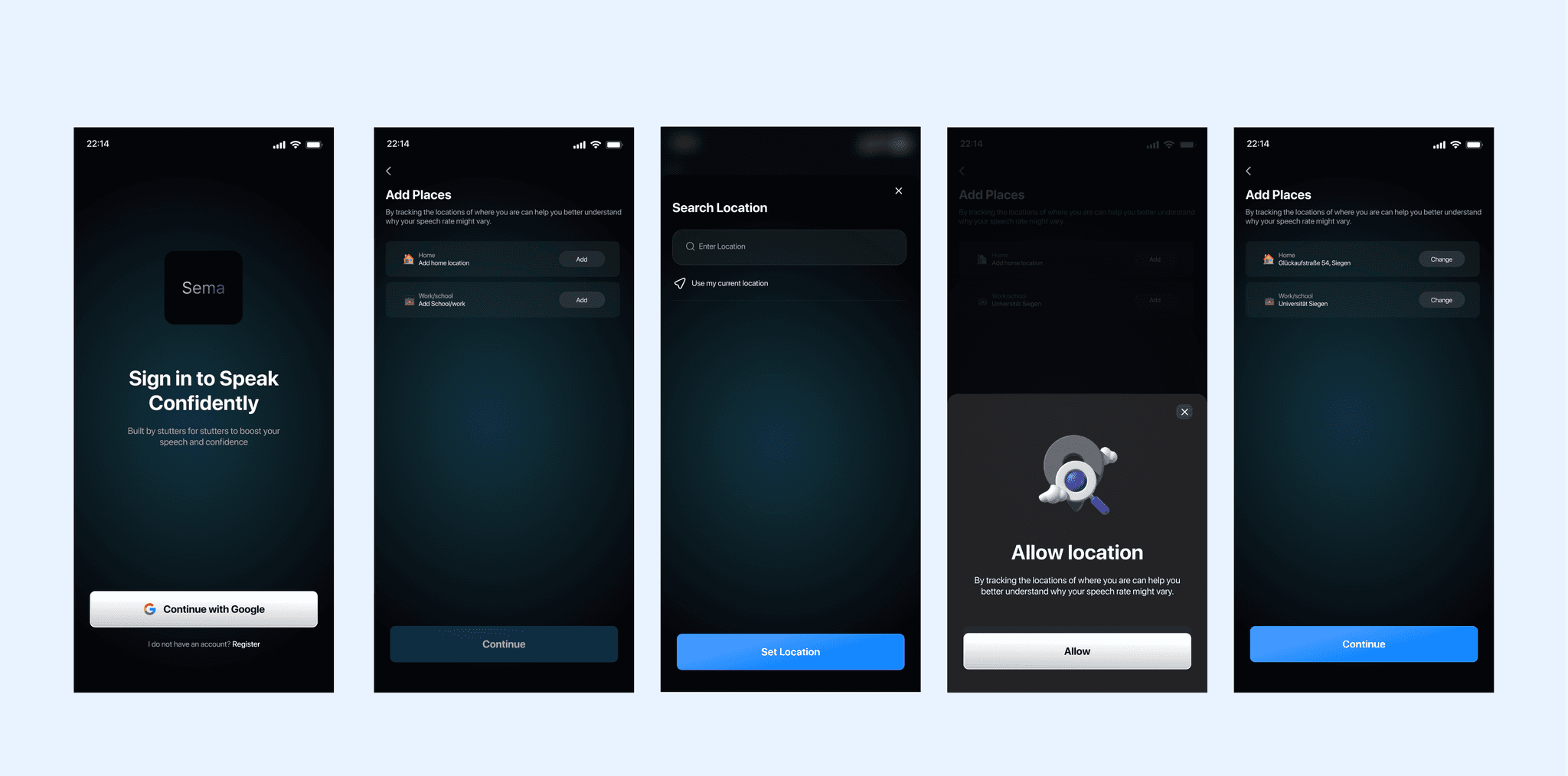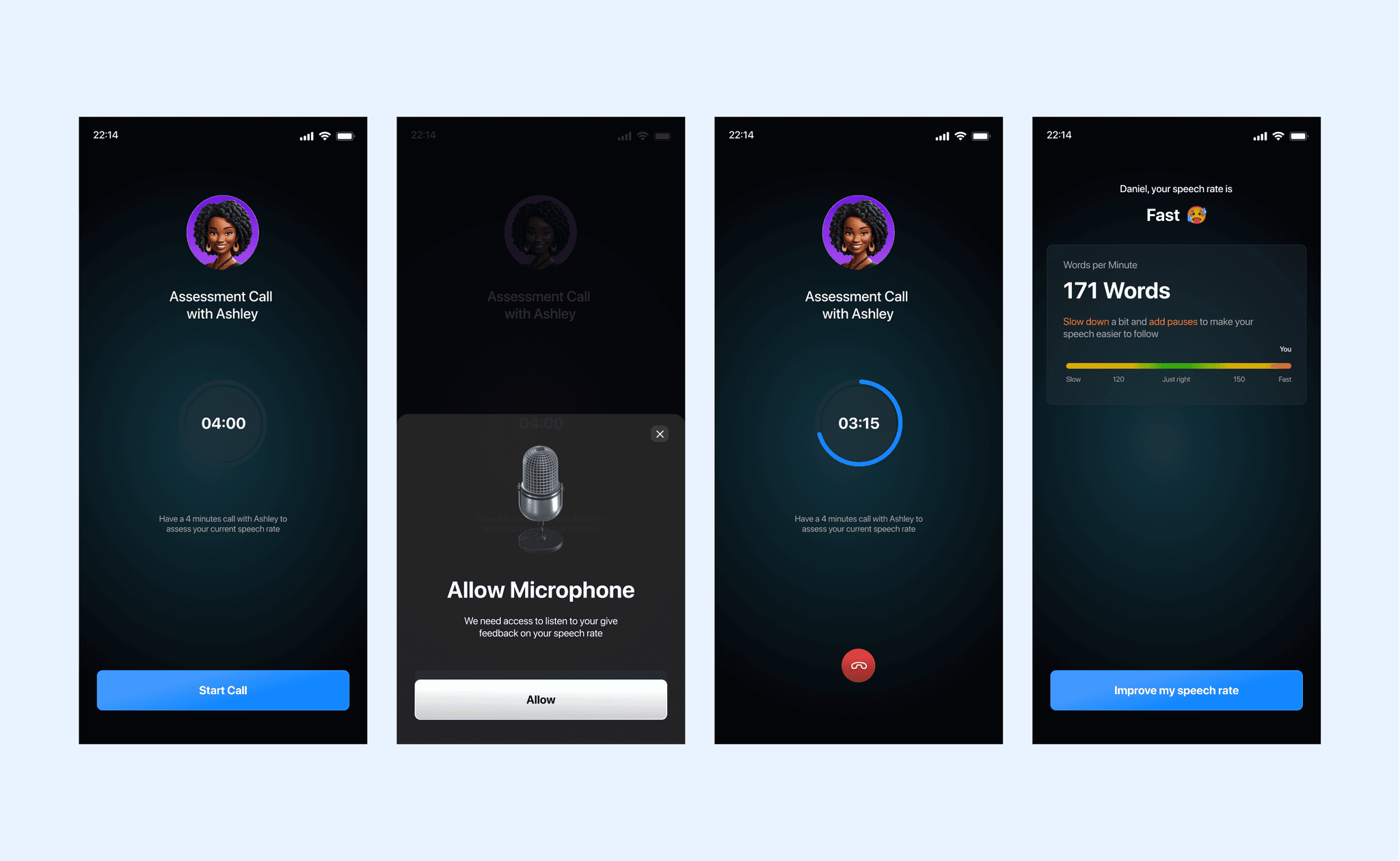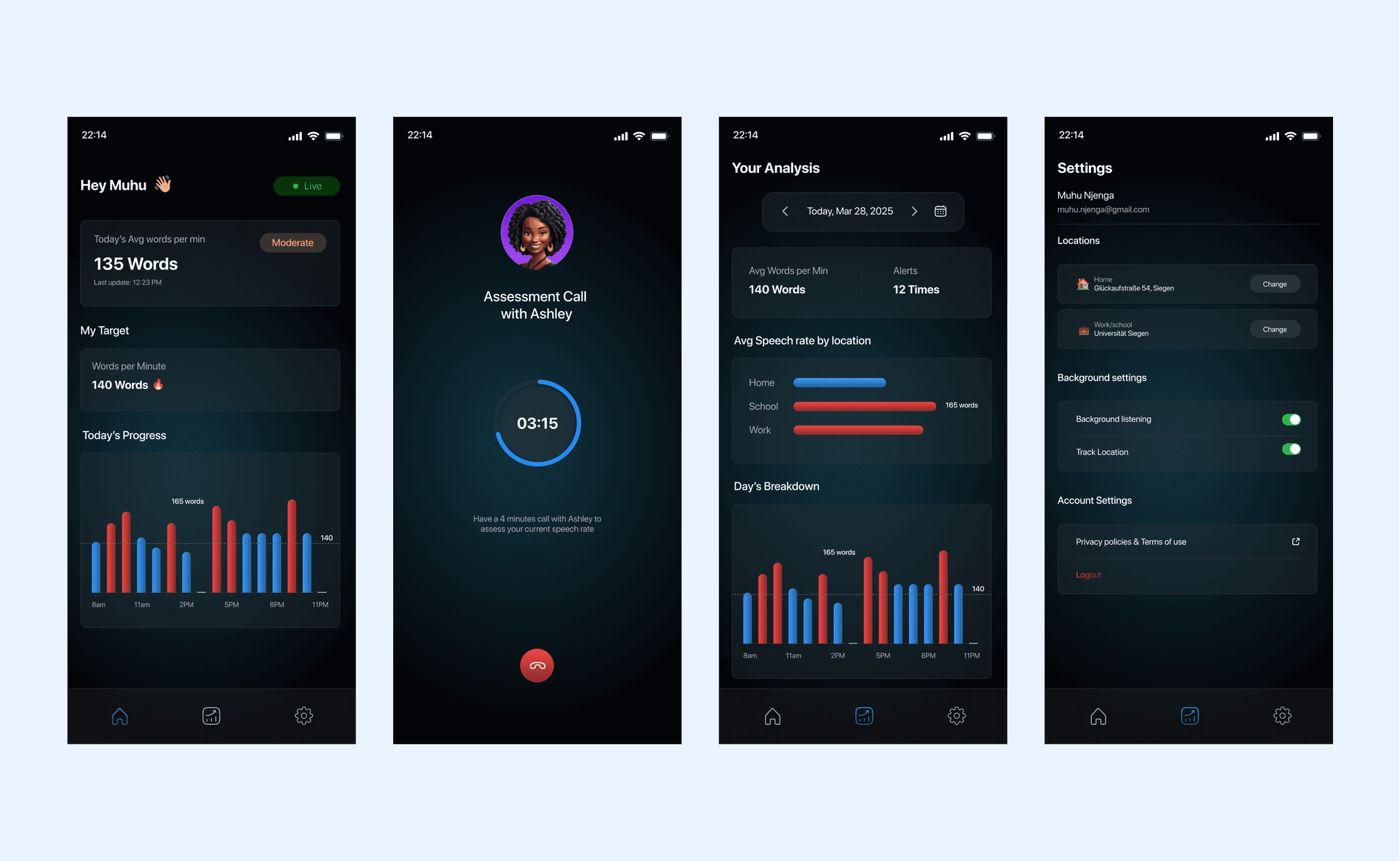Turning my stutter into a design problem and building an AI to help me solve it.
Problem
I’ve been a stammerer since I was a kid, and recently I went to see a speech pathologist. She basically told me, “Hey, your stutter isn’t random, it’s tied to your emotions and where you are.” And it’s true, the moment I get super scared, crazy excited, or even just annoyed, boom, the stammer shows up like an uninvited guest.
Growing up, I picked up this habit of speaking super fast.
Why? Because like many stutterers, I wanted to finish my sentence before someone interrupted me. The problem is, keeping myself on “slow mode” all the time takes a lot of energy. Imagine trying to be your own speed cop 24/7, it’s exhausting!
Solution
So I thought, why not let AI be my coach? The idea is simple: if I start talking too fast, the app would notice and give me a little nudge, like a buzz in my pocket or a tiny notification. Nothing too dramatic, just a friendly tap on the shoulder saying, “Hey buddy, slow it down.”
At the end of the day, the app would even show me a cool report of when and where I was racing through my words. That way I could spot patterns, laugh at the times I spoke like a rocket, and slowly train myself to chill and speak at a human pace.
User Interfaces



Personal reflections
One of my takeaways was the importance of explainability. If the app simply said, “You stammered 30% more today,” it would feel cold and judgmental. By showing when and why patterns emerged, Sema proved that design’s role is to make AI feedback feel human, not robotic.